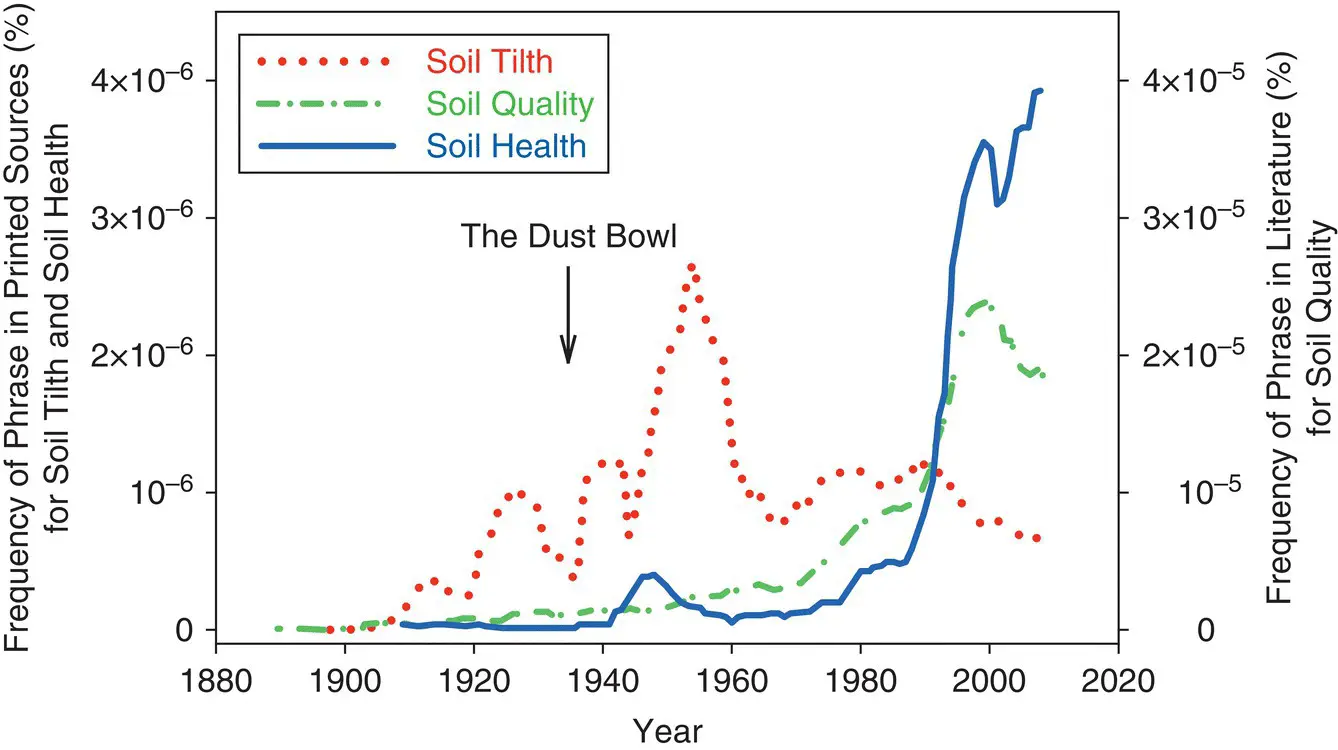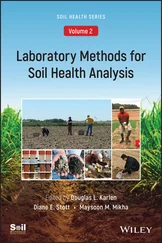Soil Health Analysis, Set
Здесь есть возможность читать онлайн «Soil Health Analysis, Set» — ознакомительный отрывок электронной книги совершенно бесплатно, а после прочтения отрывка купить полную версию. В некоторых случаях можно слушать аудио, скачать через торрент в формате fb2 и присутствует краткое содержание. Жанр: unrecognised, на английском языке. Описание произведения, (предисловие) а так же отзывы посетителей доступны на портале библиотеки ЛибКат.
- Название:Soil Health Analysis, Set
- Автор:
- Жанр:
- Год:неизвестен
- ISBN:нет данных
- Рейтинг книги:3 / 5. Голосов: 1
-
Избранное:Добавить в избранное
- Отзывы:
-
Ваша оценка:
- 60
- 1
- 2
- 3
- 4
- 5
Soil Health Analysis, Set: краткое содержание, описание и аннотация
Предлагаем к чтению аннотацию, описание, краткое содержание или предисловие (зависит от того, что написал сам автор книги «Soil Health Analysis, Set»). Если вы не нашли необходимую информацию о книге — напишите в комментариях, мы постараемся отыскать её.
Soil Health Analysis, Set — читать онлайн ознакомительный отрывок
Ниже представлен текст книги, разбитый по страницам. Система сохранения места последней прочитанной страницы, позволяет с удобством читать онлайн бесплатно книгу «Soil Health Analysis, Set», без необходимости каждый раз заново искать на чём Вы остановились. Поставьте закладку, и сможете в любой момент перейти на страницу, на которой закончили чтение.
Интервал:
Закладка:
Introduction
As the second decade of the 21 stCentury ends, the term “soil health” has become an accepted phrase, embedded globally in technical and non‐technical writings. Federal and state government, non‐government organizations, foundations, institutes, college and university curricula, public‐private‐partnerships, and numerous other entities have embraced the concept and thus embedded the term into the vernacular of many groups ( Figure 2.1). For those who have spent recent decades striving to encourage adoption of soil health principles and the management practices required to implement them, global recognition and acceptance of soil health is gratifying, but we fully acknowledge that our small and humble contributions were built on foundations laid by many before us. Some may regard the concept as new and unique, but soil health per se evolved from several soil management focus areas including soil condition, soil tilth, soil management, soil conservation, soil care, soil quality, soil productivity, soil resilience, soil security, and soil degradation.

Figure 2.1 An exponential increase in the use of soil quality and soil tilth in published literature.
(Developed by M.D. McDaniel using https://books.google.com/ngrams[Michel et al., 2011]).
Advocates for the care and wise use of soil have been warning humankind since before the common era (BCE) that soil (a.k.a. Land) is the foundation for everything we do or share (e.g., food security; water infiltration, retention and release; environmental buffering; biodiversity). Many pioneers, including H. H. Bennett who in response to the American Dust Bowl and many other improper soil management decisions successfully established the U.S. Soil Conservation Service (SCS), dedicated their lives to protecting and improving soils (Bennett, 1950). But, without question, something unique happened during the 1970s and 1980s ( Figure 2.1) that spurred interest and resulted in an exponential increase in the words soil quality and soil health in titles, keywords, and abstracts from which literature search databases are built.
We cannot identify any single event (e.g., The Dust Bowl) or explain why the importance of soil resources was finally recognized and publically discussed. Perhaps, it was the establishment of “Earth Day” in 1970 which significantly increased awareness of unintended environmental impacts associated with post‐World War II industrial developments (e.g., non‐point pollution; surface‐ and ground‐water contamination and depletion; wind‐, tillage‐ and water‐induced soil erosion; acid rain; increased emission of greenhouse gases). None‐the‐less, soil resources, some 40 years after the U.S. Dust Bowl, were once again being recognized as fragile and in need of appropriate care and management to sustain them. During that era, our now deceased mentor, colleague, and friend, W. E. (Bill) Larson, often described soil as “the thin layer covering the planet that stands between us and starvation” (Karlen et al., 2014a). This quote parallels writings by two other soil science pillars whom we suggest indirectly helped lay a foundation for soil health. The first is W.C. Lowdermilk (1953), who summarized his personal experiences in 1938 and 1939 in an often‐reproduced publication entitled "Conquest of the Land through 7,000 Years." His writings began by recognizing that human civilizations literally wrote their records on the land. He used those experiences to help raise public awareness of soil erosion problems occurring within the United States and globally. The second is Hillel (1991) who in his book “Out of the Earth: Civilization and the Life of the Soil” included a treatise in which Plato has Critias deliver a proclamation comparing degraded land and soil resources to an abandoned, emaciated person.
Science‐based principles influencing or even controlling overall soil health and the critical functions healthy soils provide for humankind can be traced to Aristotle or van Helmont, who provided some of the first insight and understanding of how plants obtain their nutrients from soils. Carter et al. (1997) quoted Columella, a prominent writer about agriculture within the Roman Empire, to illustrate his early (~40 to 60 BCE) guidance on how soil resources differ, the impact of terrain or landscape position, and how to manage them using virtues of good soil husbandry [management], such as optimizing soil moisture status, incorporating plant residues and/or manure to restore (“grow fat”) the soil. Bennett (1950) in his report on American Land emphasized that “ we can’t keep our present standard of living if we lose much more [soil].” He continued stating that “ more waste of good land would amount to a national crime on the part of those who are responsible – meaning ourselves .”
Another soil science pioneer, Hans Jenny (1980) stressed interrelationships between soil type and soil properties, while in the 1990s Warkentin (1995) emphasized how tillage energy as well as irrigation, drainage, and fertilizer inputs are all factors affecting the quality of soil for crop production. Carter et al. (1997) have also provided many details regarding the history and evolution of the soil quality concept, which we consider to closely parallel those of soil health and thus use the terms interchangeably throughout these two volumes. Carter et al. (1997) does, however, provide excellent insight regarding subtle differences between the two terms. The soil quality concept emerged as efforts were made to place a value on soil resources for providing specific functions, serving a specific purpose, or supporting a specific use. But, in contrast to water and air quality for which their functions can be directly related to human or animal consumption, soil functions are generally more diverse and usually cannot be directly linked to human health. One of the few situations that do closely link soil and human health is the function of filtering and buffering, especially if the heavy metals, radionuclotides, and/or toxic organic compounds can enter surface and groundwater resources or the food chain. This issue, specifically with regard to lead (Pb) is addressed in Chapter 7of this volume.
More recently, Jared Diamond (2005) and David Montgomery (2007) inspired public awareness of the fragility of soil resources in their books entitled “Collapse: How Societies Choose to Fail or Succeed” and “Dirt: The Erosion of Civilizations”, respectively. Building on the foundations laid by those writers and numeerous agricultural scientists and engineers, our objective for this chapter is to briefly summarize and acknowledge the insight, passion, and selected contributions that have contributed to soil health evolution during the two decades since publication of the soil quality books edited by Doran et al (1994) and Doran and Jones (1996).
Pre‐20 thCentury Soil Awareness
Soil health is built upon a solid foundation reflecting numerous agronomic and soil science publications and advancements in knowledge. We would be remise not to mention classic scientists, like Darwin and Dukochaev, that spearheaded not only the modern scientific revolution but also our understanding of soil development and biology (e.g., Brevik and Hartemik, 2010; Johnson and Schaetzl, 2015; Ghilarov, 1983). Likewise, it’s imparitive to acknowledge the indigenous ecological knowledge on soil health acquired by non‐colonial cultures over thousands of years (Pawluk, 1992; Raji, 2006). Those roots of soil health are critical, but beyond the focus of this chapter. Therefore, we start with the late 20 thCentury and in the United States, where the concept of tilth (Warkentin 2008; Karlen 1990) is considered a key driver for what is now recognized as soil health. One example, provided in a review of past, present, and future soil tilth issues (Karlen et al. 1990) is a 1523 book by Fitzherbert, entitled “Boke of Husbandry.” Therein, Fitzherbert wrote that to grow peas ( Pisum sativum L.) or beans ( Phaseolus vulgaris L.) the soil was not ready to be planted “if it synge or crye, or make any noise under thy fete” whereas “if it make no noyse and wyll beare they horses, thane sowe in the name of God” (Keen, 1931). A similar quote from Fream (1890) described “good” soil as being “open, free‐working, mellow or in good heart” and “non‐productive” soil as “hungry, stubborn, still, cold, or unkind.” For some, these descriptions of “good” and “non‐productive” soils cause them to recall the Biblical connection between soil and life described by Hillel (1991) or even the New Testament parable wherein Jesus describes people and their actions as being similar to one for the four soil categories.
Читать дальшеИнтервал:
Закладка:
Похожие книги на «Soil Health Analysis, Set»
Представляем Вашему вниманию похожие книги на «Soil Health Analysis, Set» списком для выбора. Мы отобрали схожую по названию и смыслу литературу в надежде предоставить читателям больше вариантов отыскать новые, интересные, ещё непрочитанные произведения.
Обсуждение, отзывы о книге «Soil Health Analysis, Set» и просто собственные мнения читателей. Оставьте ваши комментарии, напишите, что Вы думаете о произведении, его смысле или главных героях. Укажите что конкретно понравилось, а что нет, и почему Вы так считаете.












